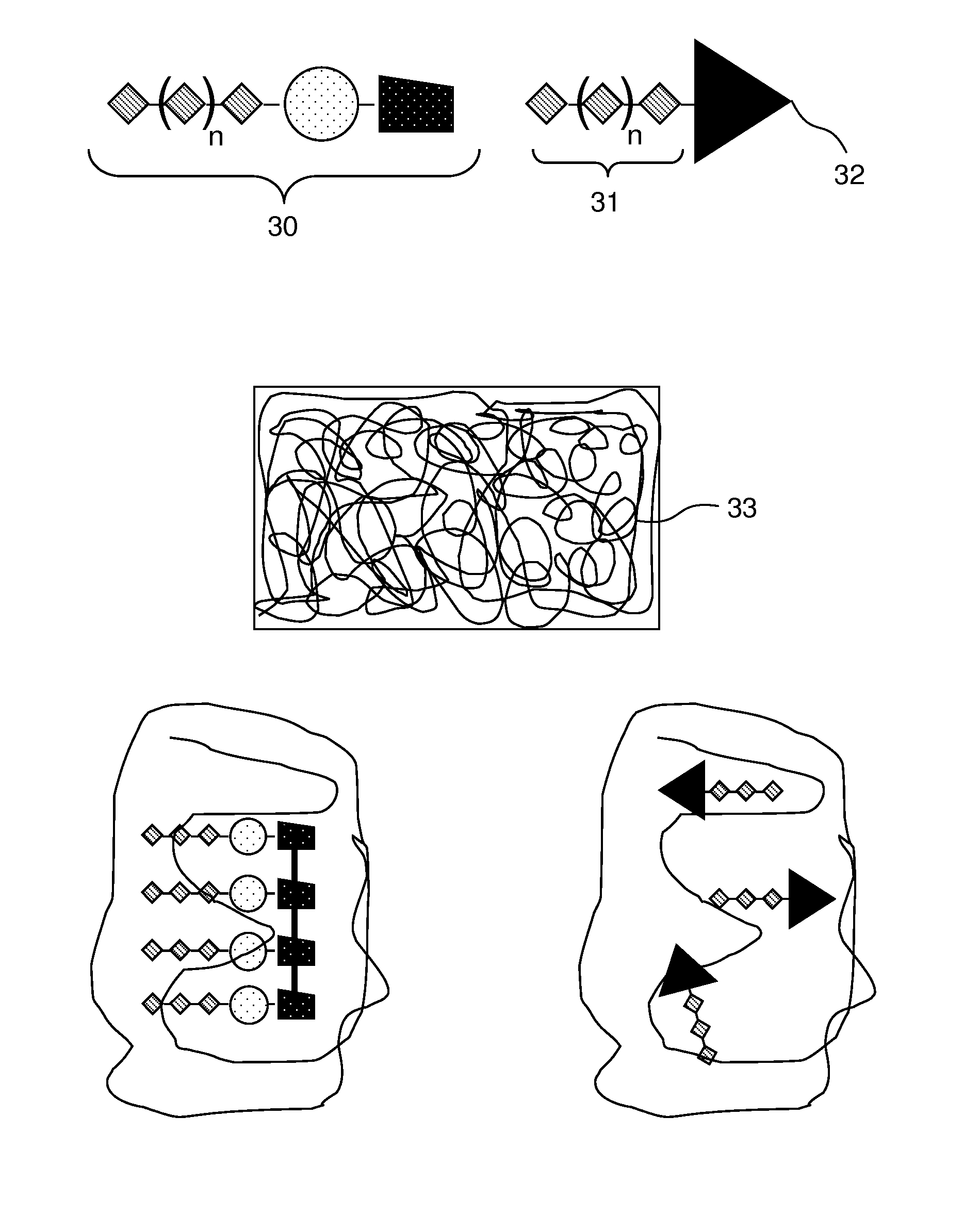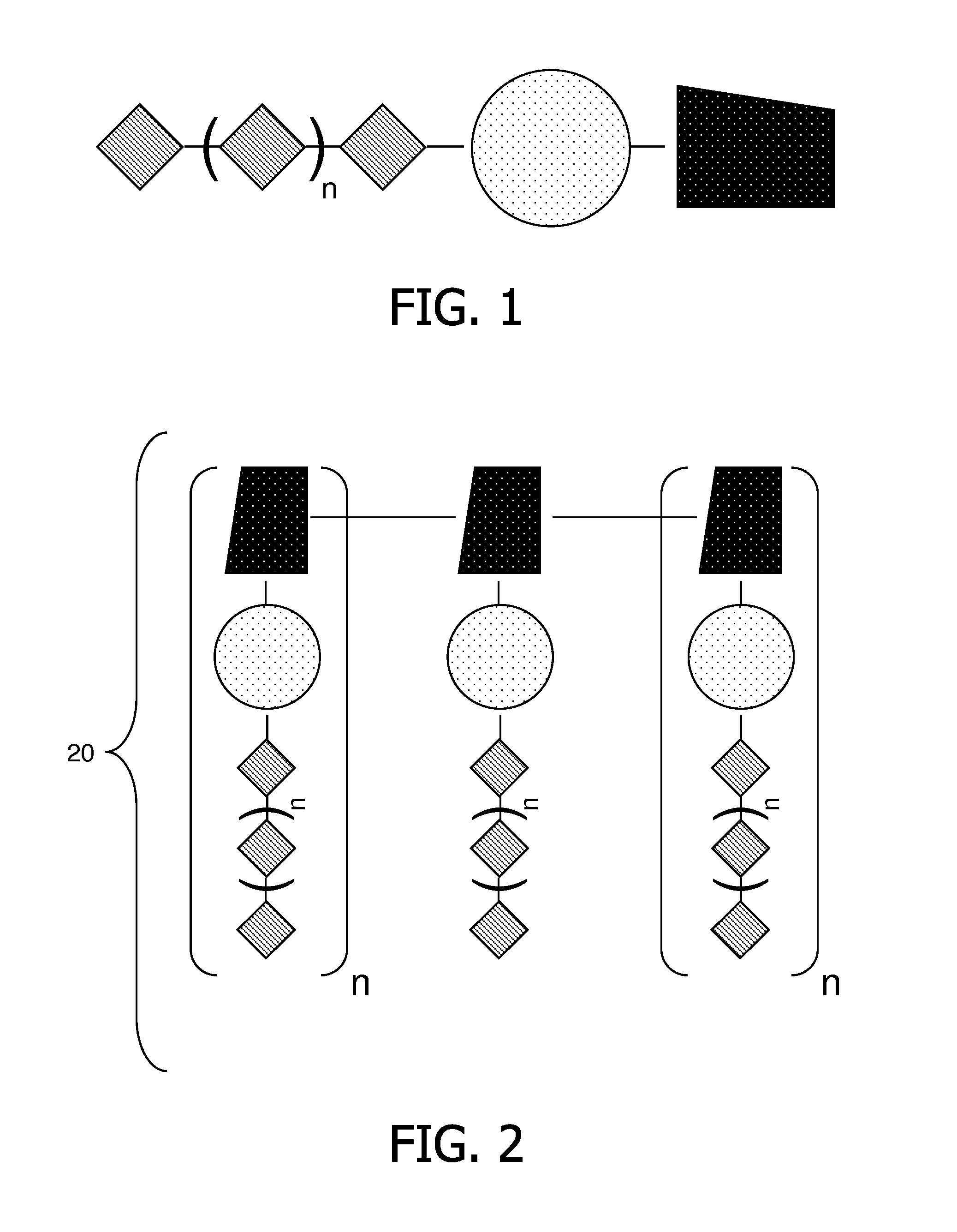Method for the production of labelled scaffolds, comprising at least one reactive fluorinated surfactant, and scaffold produced therewith
a fluorinated surfactant and scaffold technology, applied in the field of tissue engineering and organ engineering, can solve the problems of hardly visible, low and inability to produce scaffolds, so as to prevent the evaporation of fluorinated compounds, the solubility of highly fluorinated labelling compounds is improved.
- Summary
- Abstract
- Description
- Claims
- Application Information
AI Technical Summary
Benefits of technology
Problems solved by technology
Method used
Image
Examples
examples
[0133]In order to demonstrate the essential features of the invention two polymer solutions have been prepared for scaffold construction by means of electrospinning. Electrospinning is a simple method for generating ultrathin fibers from materials such as polymers, composites, and others. Nanofibers of both solid and hollow interiors can be formed. The thin fibers are produced by uniaxial stretching of a viscoelastic jet derived from a polymer solution or melt by applying high voltages. The fibers are deposited on a flat surface and lead to a complex meshwork which afterwards can be shaped.
[0134]The first electrospin solution contains perfluorooctylbromide (PFOB) as commonly used in prior art. The second solution contains, next to the PFOB a small amount of the reactive fluorinated surfactant 2(N-ethylperfluorooctanesulfo amido)ethylacrylate.
[0135]Electrospin Solution 1:
[0136]3.4 grams of polycaprolactone was dissolved in 16.6 grams chloroform by stirring for 24 hours at room temper...
PUM
 Login to View More
Login to View More Abstract
Description
Claims
Application Information
 Login to View More
Login to View More - R&D
- Intellectual Property
- Life Sciences
- Materials
- Tech Scout
- Unparalleled Data Quality
- Higher Quality Content
- 60% Fewer Hallucinations
Browse by: Latest US Patents, China's latest patents, Technical Efficacy Thesaurus, Application Domain, Technology Topic, Popular Technical Reports.
© 2025 PatSnap. All rights reserved.Legal|Privacy policy|Modern Slavery Act Transparency Statement|Sitemap|About US| Contact US: help@patsnap.com



